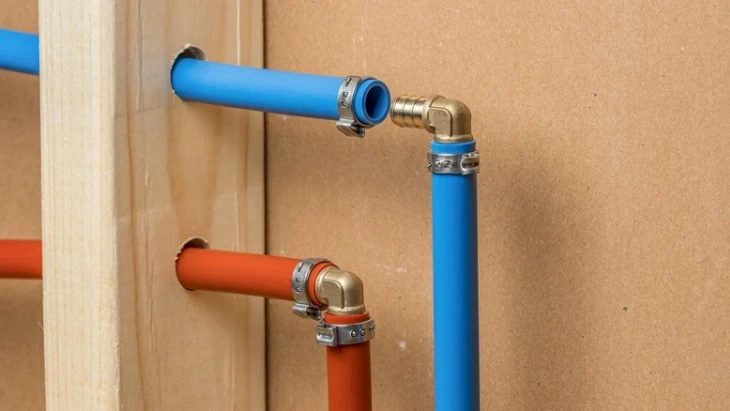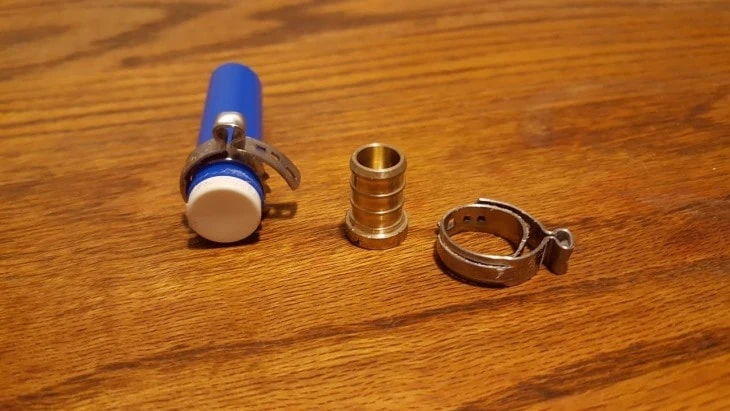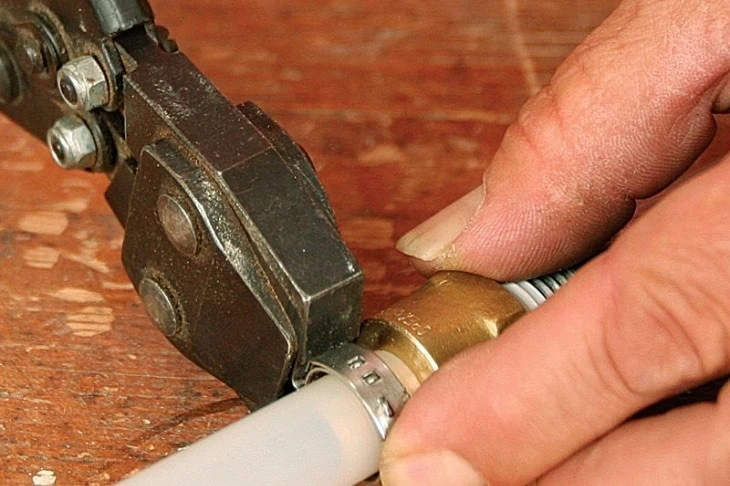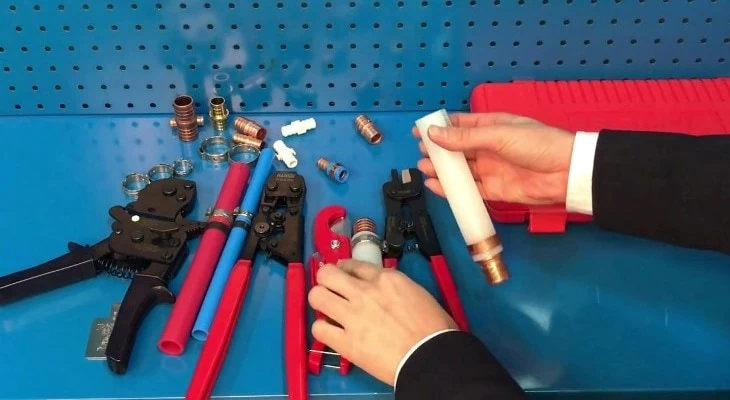Once upon a time, plumbing was left to the highly trained professionals, but now products exist that allow even the least experienced to have a dabble in it.
Plumbing can be a real hassle, especially in an emergency situation, but PEX, with its cinch and crimp connectors, really has changed all that.
Table of Contents
What is PEX?

PEX is a material used in plumbing, most commonly as water supply lines. At a fraction of the cost of copper, it offers easier installation and far better durability. Currently, it’s easily one of the best plumbing materials available.
Made from cross-linked Polyethylene, this material is flexible and fairly easy to work with.
What is a Cinch or Crimp?

Cinch or Crimp refers to a type of PEX connector. Both are metal rings that allow PEX to be attached to existing lines and fittings, such as elbows.
While cinch and crimp are similar in that way, and both require a compression tool to create a seal, they are quite different in many ways.
How Does a Cinch Clamp Work?
A cinch clamp is a stainless steel ring that slides over PEX and adjoining fitting.
A special tool, called a clamping tool, is then placed over the protruding side of the ring and compresses the ring securely to the fitting.
This forces the PEX to mold tightly to the fitting itself, stopping any leaks.
When Are Cinch Clamps Beneficial?

Since the clamping tool doesn’t require as much space for use, it makes it ideal for tight spaces, like behind the fridge or under a sink.
Another benefit is that the stainless steel fitting repels rust, making it a great option for damp spaces, such as crawlspaces. You will also find the cinch clamp tool is the cheaper option.
What are the Drawbacks of Using a Cinch Clamp?
While the tool is cheaper, the clamps are more expensive. Cinch clamps also tend to look messier than crimp rings after installation.
Another drawback is the installation tends to be a bit finicky and can fail if not done with precision.
How Does a Crimp Ring Work?
A crimp is a smooth ring, usually made of copper that similarly slides over the PEX and an adjoining fitting.
Installation for this connector requires the crimp ring, a crimp tool, and a gauge called a Go-No-Go Gauge.
This tool slides over the entire ring, clamping the PEX and fitting together to create an equally secure seal.
When Are Crimp Rings Beneficial?

Crimp rings work well in new buildings, additions, or remodels when you have open space for the proper tool usage.
They add strength to joints, such as elbows, t’s, and couplings. They provide security against leaks for five-plus years if properly installed.
Crimp rings leave room for error, making them easier to install for new users.
The rings are also easier to find and less expensive than the cinch clamp alternative. Made of copper, crimp rings tend to hold their shape better as well.
What Are the Drawbacks of Using a Crimp Ring?
The first drawback is crimp rings must be purchased in different sizes to accommodate moving from one size line to another.
Another is that the tools necessary for installation are more expensive and also require changing parts out to size up or down.
Crimp rings are also more time-consuming due to the multiple steps needed for proper installation.
Lastly, if you are in need of a tight space repair, this method will likely not work well for you.
Is It Better to Crimp or Cinch PEX?
So, now that you have all the technical information, you are probably wondering which is better.
I have used PEX multiple times, and I would say both are an acceptable fix for any job, and it really comes down to individuality.
However, as far as versatility and expense go, cinch clamps are the better investment overall. Its versatility makes it the best option for sizing up or down and from one material to another.
Cinch clamps can also be installed quickly, saving you time.
However, the biggest reason I would pick cinch clamps over crimp rings is cinch can be used in virtually any space, as opposed to crimp rings.

